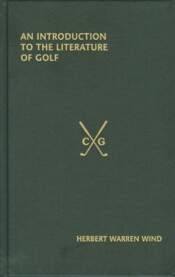-
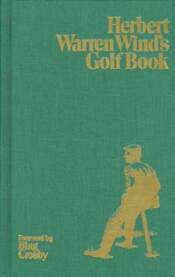 By Herbert Warren Wind A stirring collection of magazine articles and excerpts assembled only the way Herbert Warren Wind can. Wind offers his thoughts on Hogan, Snead, Venturi and Darwin, among others. They inspired thousands of golfers and set the standards for the golf writers that followed. This collection contains some of his most famous pieces on the great players, tournaments, golf architecture, turning points in the history of the game, and unusual aspects of golf that no one else bothered to write about . The story of one of the Triumvirate who, at the turn of the century, along with Taylor and Vardon, elevated the game from a Scottish curiousity to a level of unimaginable popularity, North to the Links of Dornach”, “The 1964 United States Open: The Third Man”, and “Some Thoughts on Golf Course Architecture”. The best from America’s best golf writer. Foreword by Bing Crosby.
By Herbert Warren Wind A stirring collection of magazine articles and excerpts assembled only the way Herbert Warren Wind can. Wind offers his thoughts on Hogan, Snead, Venturi and Darwin, among others. They inspired thousands of golfers and set the standards for the golf writers that followed. This collection contains some of his most famous pieces on the great players, tournaments, golf architecture, turning points in the history of the game, and unusual aspects of golf that no one else bothered to write about . The story of one of the Triumvirate who, at the turn of the century, along with Taylor and Vardon, elevated the game from a Scottish curiousity to a level of unimaginable popularity, North to the Links of Dornach”, “The 1964 United States Open: The Third Man”, and “Some Thoughts on Golf Course Architecture”. The best from America’s best golf writer. Foreword by Bing Crosby. -
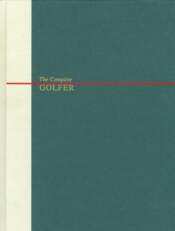 Edited by Herbert Warren Wind Odds are against you in most games of chance. But if you ever wanted a sure bet, give this book to any golfer as a gift. It is similar to lunch at Muirfield; many choices through many courses, all worthy of the finest table, and all shared convivially. As such, it is sure to satisfy every palate. Open The Complete Golfer anywhere and you are very likely to find something you enjoy. The reason is due largely to the wonderful choices made for this anthology by editor Herbert Warren Wind. A quality miscellany requires good selection by the compiler, a success often determined by their breadth of knowledge on the subject. Wind was in his best form in the early 1950s after writing The History of American Golf (a Classics of Golf title) and joining the staff of the New Yorker in 1949. He spent two years researching the literature of golf for his top picks in a variety of disciplines for this volume. Bobby Jones writes in the original introduction, “Golf has more than enough in it to command the respect of any man.” Considerable literature will develop around such a game continues Jones, “History, humor, curiosities, stories of championships, essays on methods…and every golfer, I think, owes it to himself to have an acquaintance with this literature.” To ease into this familiarity, Wind begins lightheartedly with fiction and a selection of cartoons. This seemingly innocent beginning is good preparation for the meatier third section The Spirit of the Game with history, comments, reminiscences and some humor. Francis Ouimet gives an intimate view of growing up across the street from the country club; how he would sneak on and play until discovered and chased by the greenkeeper. H. B. Martin tells us how golf came into American legitimacy with the 1888 formation of The Saint Andrew’s Golf Club in Yonkers, NY, and how the “Old Apple Tree Gang” received its name. Grantland Rice’s article for The American Golfer (see the Classics of Golf selection by the same title for many more articles) is one of the most insightful ever written on Bobby Jones’ preparation for his record-setting Grand Slam year. Rice prophetically closes The Prospect for 1930 with: “There is at least a first class chance that this will be the best year he has ever had, and that will mean the best year any individual golfer ever had.” If Jones is your cup of tea, you will read and reread Bernard Darwin’s The Immortal Bobby, one of the best pieces ever written on the man. Another famous Jones, Robert Trent Jones, contributed an excellent chapter of substance on golf course architecture entitled From St. Andrews to the Modern American Courses. He offers an overview of the history of his craft but focuses on several modern courses to explain current theory. The discussions are facilitated by the inclusion of a series of color course maps. Pinehurst No. 2, Pine Valley, Merion, Pebble Beach, Augusta National, The National Golf Links, and Oakland Hills are detailed and studied in comparison with The Old Course. One other course is omitted from that list, not to slight it because only one hole was used, but to single it out. It is uniquely significant in Jones’ view; it is the only other hole he discusses from all the remaining courses in Britain. “The Redan—the fifteenth hole at North Berwick—takes its name from the famous redoubt at Sevastopol, which the British stormed in 1855…the Redan holds a salient position in the development of golf architecture. It was one of the first holes to demonstrate the beauties of strategic design so forcibly that it was copied at many other courses, and it became a touchstone for golf course layout.” The section on Great Players, Historic Moments has enough stories for a dozen Hollywood movies. Walter Travis writes on how he won the Amateur Championship. Byron Nelson is profiled immediately after he broke the PGA record for consecutive tournament wins with six (Nelson was on his way to an insurmountable record of 11 victories in a row—he was that good.) One article exemplifies the type of attitude that is presently lost from the professional game: star player Gene Sarazen writes a heartfelt article about Walter Hagen– My Hero, My Rival exhibiting sportsmanship befitting a gentleman. In an autobiographical piece, Sarazen also relates how he played the last 28 holes of the 1932 U. S. Open in 100 strokes, over a tough Tillinghast layout. Even those who do not like, or do not think they need instruction will benefit from The Masters’ Voices. Wind does not select staid instructors who might begin with “Now place your hand on the club…” Wind offers Willie Park, Jr., on The Importance of Style; How Hogan Picks His Clubs by his pal Jimmy Demaret; and It Takes Brains to Play Golf by Gene Sarazen. The list of able contributors and engaging methods is, as in prior chapters, impressive and important. There are many fine excerpts, columns, stories and recollections not mentioned here for you to discover at your leisure. Whether enjoyed by article or chapter, The Complete Golfer offers as diverse and excellent a selection of golf literature as one might reasonably put between the covers of a book. Forewords by Herbert Warren Wind and Robert T. Jones, Jr., Afterword by Frank Hannigan
Edited by Herbert Warren Wind Odds are against you in most games of chance. But if you ever wanted a sure bet, give this book to any golfer as a gift. It is similar to lunch at Muirfield; many choices through many courses, all worthy of the finest table, and all shared convivially. As such, it is sure to satisfy every palate. Open The Complete Golfer anywhere and you are very likely to find something you enjoy. The reason is due largely to the wonderful choices made for this anthology by editor Herbert Warren Wind. A quality miscellany requires good selection by the compiler, a success often determined by their breadth of knowledge on the subject. Wind was in his best form in the early 1950s after writing The History of American Golf (a Classics of Golf title) and joining the staff of the New Yorker in 1949. He spent two years researching the literature of golf for his top picks in a variety of disciplines for this volume. Bobby Jones writes in the original introduction, “Golf has more than enough in it to command the respect of any man.” Considerable literature will develop around such a game continues Jones, “History, humor, curiosities, stories of championships, essays on methods…and every golfer, I think, owes it to himself to have an acquaintance with this literature.” To ease into this familiarity, Wind begins lightheartedly with fiction and a selection of cartoons. This seemingly innocent beginning is good preparation for the meatier third section The Spirit of the Game with history, comments, reminiscences and some humor. Francis Ouimet gives an intimate view of growing up across the street from the country club; how he would sneak on and play until discovered and chased by the greenkeeper. H. B. Martin tells us how golf came into American legitimacy with the 1888 formation of The Saint Andrew’s Golf Club in Yonkers, NY, and how the “Old Apple Tree Gang” received its name. Grantland Rice’s article for The American Golfer (see the Classics of Golf selection by the same title for many more articles) is one of the most insightful ever written on Bobby Jones’ preparation for his record-setting Grand Slam year. Rice prophetically closes The Prospect for 1930 with: “There is at least a first class chance that this will be the best year he has ever had, and that will mean the best year any individual golfer ever had.” If Jones is your cup of tea, you will read and reread Bernard Darwin’s The Immortal Bobby, one of the best pieces ever written on the man. Another famous Jones, Robert Trent Jones, contributed an excellent chapter of substance on golf course architecture entitled From St. Andrews to the Modern American Courses. He offers an overview of the history of his craft but focuses on several modern courses to explain current theory. The discussions are facilitated by the inclusion of a series of color course maps. Pinehurst No. 2, Pine Valley, Merion, Pebble Beach, Augusta National, The National Golf Links, and Oakland Hills are detailed and studied in comparison with The Old Course. One other course is omitted from that list, not to slight it because only one hole was used, but to single it out. It is uniquely significant in Jones’ view; it is the only other hole he discusses from all the remaining courses in Britain. “The Redan—the fifteenth hole at North Berwick—takes its name from the famous redoubt at Sevastopol, which the British stormed in 1855…the Redan holds a salient position in the development of golf architecture. It was one of the first holes to demonstrate the beauties of strategic design so forcibly that it was copied at many other courses, and it became a touchstone for golf course layout.” The section on Great Players, Historic Moments has enough stories for a dozen Hollywood movies. Walter Travis writes on how he won the Amateur Championship. Byron Nelson is profiled immediately after he broke the PGA record for consecutive tournament wins with six (Nelson was on his way to an insurmountable record of 11 victories in a row—he was that good.) One article exemplifies the type of attitude that is presently lost from the professional game: star player Gene Sarazen writes a heartfelt article about Walter Hagen– My Hero, My Rival exhibiting sportsmanship befitting a gentleman. In an autobiographical piece, Sarazen also relates how he played the last 28 holes of the 1932 U. S. Open in 100 strokes, over a tough Tillinghast layout. Even those who do not like, or do not think they need instruction will benefit from The Masters’ Voices. Wind does not select staid instructors who might begin with “Now place your hand on the club…” Wind offers Willie Park, Jr., on The Importance of Style; How Hogan Picks His Clubs by his pal Jimmy Demaret; and It Takes Brains to Play Golf by Gene Sarazen. The list of able contributors and engaging methods is, as in prior chapters, impressive and important. There are many fine excerpts, columns, stories and recollections not mentioned here for you to discover at your leisure. Whether enjoyed by article or chapter, The Complete Golfer offers as diverse and excellent a selection of golf literature as one might reasonably put between the covers of a book. Forewords by Herbert Warren Wind and Robert T. Jones, Jr., Afterword by Frank Hannigan -
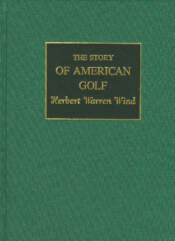 By Herbert Warren Wind Wind's masterpiece is one of the great books in golf. In the second half of the twentieth century, Wind contributed as much to golf as the force of nature with which he shares a name. He helped Ben Hogan codify his knowledge of the swing and Gene Sarazen and Jack Nicklaus tell their life stories in riveting fashion. (He also gave Amen Corner its name.) And, like a certain famous Englishman, he took golf reportage to a new level of specificity, insight and narrative grace, writing primarily for the New Yorker. He always saw himself as the heir and apprentice to Bernard Darwin, but in some ways he surpassed the master, translating his principles into a lively, colloquial American idiom. First published in 1948, Wind's most cohesive work traced American golf from its earliest stirrings in Yonkers, New York, in 1888. He updated the book in 1956 and again in 1975, nearly doubling its size. The Story of American Golf is just that—a great story. You can't put it down even though you know how it all turns out Afterword by Robert. S. Macdonald.
By Herbert Warren Wind Wind's masterpiece is one of the great books in golf. In the second half of the twentieth century, Wind contributed as much to golf as the force of nature with which he shares a name. He helped Ben Hogan codify his knowledge of the swing and Gene Sarazen and Jack Nicklaus tell their life stories in riveting fashion. (He also gave Amen Corner its name.) And, like a certain famous Englishman, he took golf reportage to a new level of specificity, insight and narrative grace, writing primarily for the New Yorker. He always saw himself as the heir and apprentice to Bernard Darwin, but in some ways he surpassed the master, translating his principles into a lively, colloquial American idiom. First published in 1948, Wind's most cohesive work traced American golf from its earliest stirrings in Yonkers, New York, in 1888. He updated the book in 1956 and again in 1975, nearly doubling its size. The Story of American Golf is just that—a great story. You can't put it down even though you know how it all turns out Afterword by Robert. S. Macdonald. -

By Gene Sarazen
This candid autobiography of the legendary golfer gives a fine account of golf during the 1920s and 30s. This is such an enjoyable read by one of golf's true greats with one delightful story after another about Sarazen's life in golf, which began as like many others in this time period as a caddie.
From his infamous double eagle at Augusta to his touching story with the elderly caddie Daniels and their win at The British, this book is jammed packed with golf told through the eyes of a man who played alongside the like of Vardon, Cotton, Armour, Snead, Hogan and Hagen, among others. What a fascinating insight into not only this wonderful champion and his life, but the game itself. Expertly written with Herbert Warren Wind. Afterword by Peter Ryde. -
 Edited by Herbert Warren Wind and Robert S. Macdonald Harry Vardon--6 time Open Champion and a true golf superstar. This is the best of Vardon's writing, including autobiographical and instructional material. A gem of a book. An original publication by The Classics of Golf. Afterword by S.L. McKinlay.
Edited by Herbert Warren Wind and Robert S. Macdonald Harry Vardon--6 time Open Champion and a true golf superstar. This is the best of Vardon's writing, including autobiographical and instructional material. A gem of a book. An original publication by The Classics of Golf. Afterword by S.L. McKinlay. -
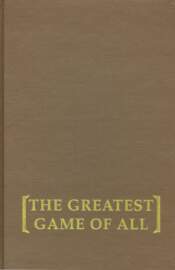 By Jack Nicklaus with Herbert Warren Wind Written at the height of his powers--this books is a fantastic insight into one of the great sportsman in history. The chapters on instruction are terrific, reflecting Nicklaus' focus on a few fundamentals and his uncomplicated approach to the game. What you see in this book is an amazing attitude and mentality that carries Nicklaus to the most majors ever won and doing it with class. The book was written with the Dean of American Sportwriters, Herbert Warren Wind, who writing brings out the real Nicklaus.
By Jack Nicklaus with Herbert Warren Wind Written at the height of his powers--this books is a fantastic insight into one of the great sportsman in history. The chapters on instruction are terrific, reflecting Nicklaus' focus on a few fundamentals and his uncomplicated approach to the game. What you see in this book is an amazing attitude and mentality that carries Nicklaus to the most majors ever won and doing it with class. The book was written with the Dean of American Sportwriters, Herbert Warren Wind, who writing brings out the real Nicklaus.

